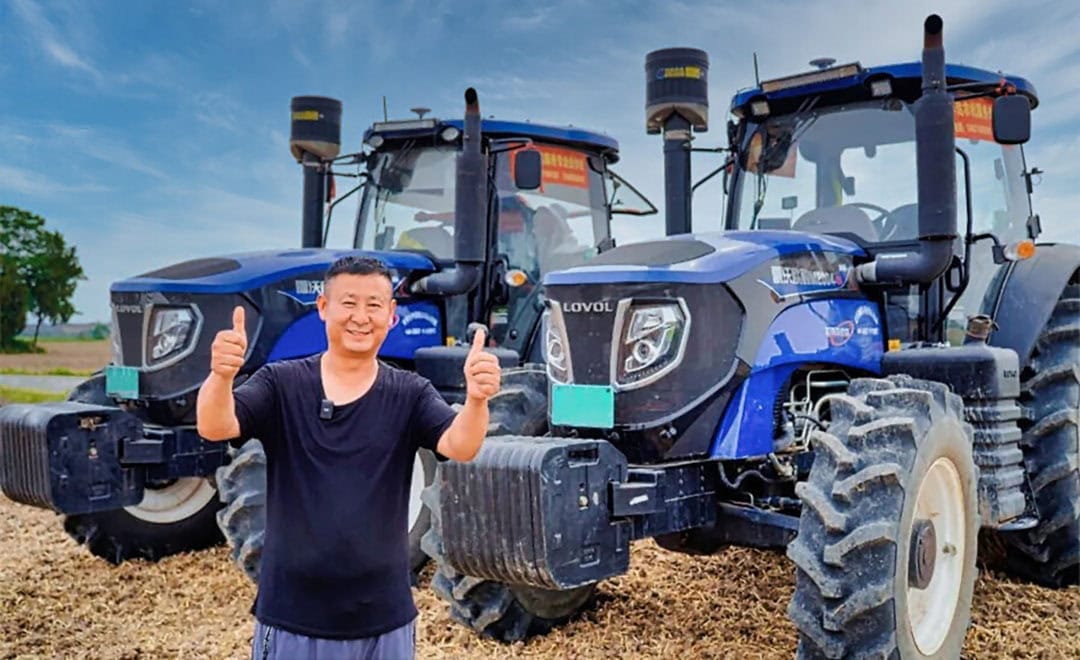How auto-steering systems boost intercropping efficiency

Using AgTech in the intercropping of corn and soybeans can increase land and fertiliser use efficiency.
One of the biggest challenges facing farmers today is increasing productivity per hectare. Intercropping, the practice of growing two or more crops together in the same field, is being adopted worldwide as a sustainable and effective agricultural practice. The main objective of intercropping is to get the best possible yield from a given plot of land by maximising the potential resources available at a given time. When crops are grown together, they can affect each other negatively or positively as they compete for water, light and nutrients. Careful crop selection, precision seeding and growth management are the keys to success. In this case study, corn and soybeans were grown together in the same field in China, and the CHCNAV auto-steering system was used to achieve the precision required for seeding.
The value of corn and soybean intercropping to reduce nutrient inputs
Plants in the leguminous family, such as soybeans, are known for their nitrogen fixing properties. As such, soybeans provide nitrogen to corn, making intercropping to some extent a way of reducing the need for additional nitrogen fertiliser, saving on spreading costs and avoiding the potential loss of nitrogen from the farm to the environment. It also increases biodiversity and ecological stability by allowing more agricultural species to grow on the same plot.
What are the precision seeding requirements for intercropping?
Corn has a tall stalk, whereas soybeans have a relatively short stalk. As a result, corn leaves can shade soybeans and prevent them from being exposed to sunlight, making it difficult for soybeans to grow properly and resulting in sub-optimal yields. The combination of tall and short stalks can be detrimental to both crops. Planting requirements are therefore high in terms of density and row spacing. Planting patterns must be well planned and accurately executed to ensure the best results.
How can auto-steering systems improve intercropping yields?
For Mr Chen, president of Agricultural Machinery in Anhui, China, this was the first year his team used the CHCNAV autosteering system to intercrop corn and soybeans.

Mr Chen said: “Before, we did not use any guidance or automated steering systems. The seed rows were full of curves, which didn’t contribute to a bountiful harvest. But this time, we used CHCNAV NX510 auto-steering system on 4 of our farm machines, and the results were amazing! With the system, planting is a simple task. The operator sets the parameters, and the tractor automatically follows the required row spacing for the crop; whether it’s 40 cm or 60 cm, the exact spacing width is always maintained.
As a result, we have started to make more rational use of our human resources, and our day-to-day performance has improved significantly. In the future we will equip our other tractors with this system – we have dozens of them”.
What complete precision farming solutions can CHCNAV offer for intercropping?
CHCNAV’s Agriculture Division develops GNSS-based solutions that are an essential part of every farmer’s business. CHCNAV guidance and auto-steering systems help farmers to be much more efficient, reduce fatigue and generate savings on chemicals and fertilizers. With a pass-to-pass accuracy of ±2.5 cm, the CHCNAV NX510 auto-steering system provides perfect row spacing control for corn and soybean plants, ensuring that each row is evenly spaced or alternated. By controlling row spacing and sowing density, the system not only allows sunlight to reach the lower plants, promoting crop growth, but also helps to reduce pesticide spraying. All this adds value for farmers like Mr Chen, who need a cost-effective solution to optimise their intercrop yields.
